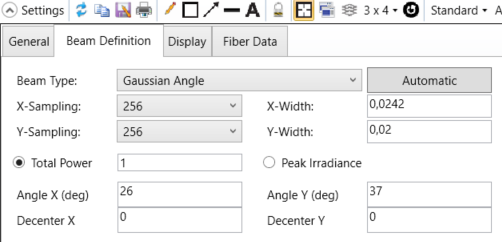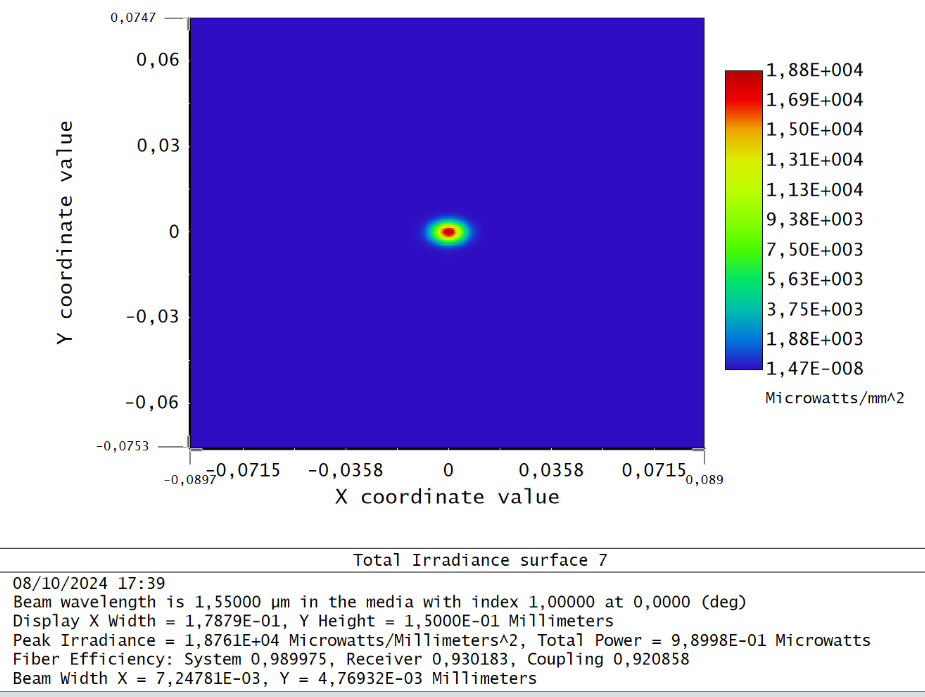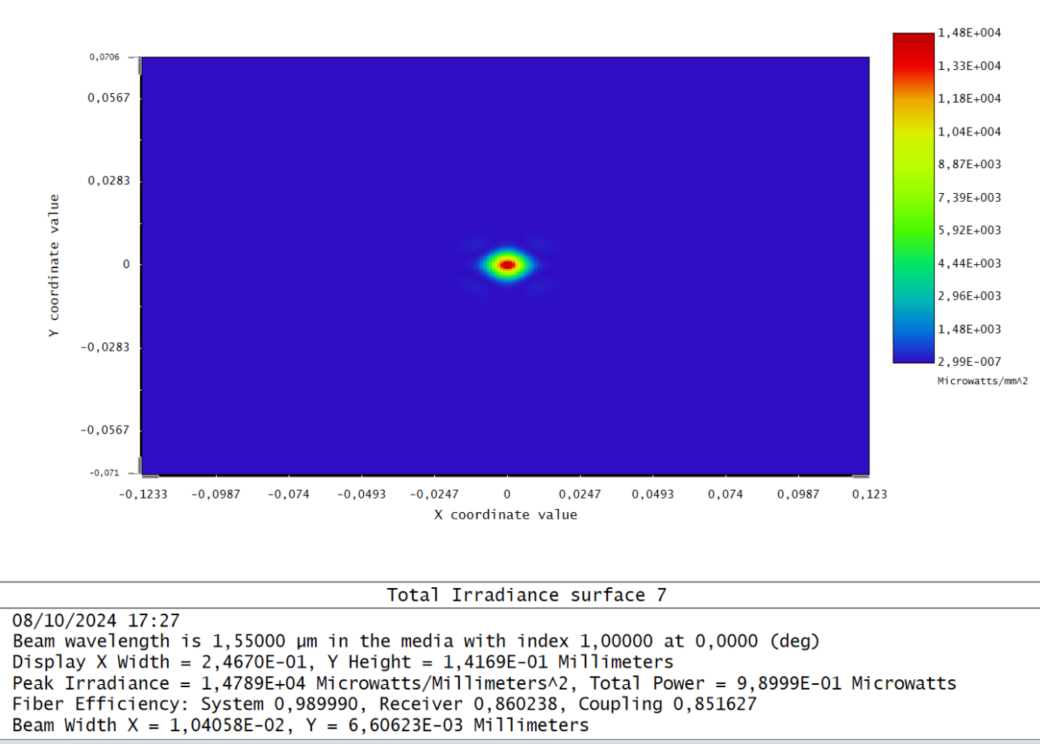Hello,
I'm trying to take an elliptical beam (example from a laser - 26deg in X and 37deg in Y) as defined by the POP settings, using Gaussian Angle, and use a polynomial lens to circularize it.
My problem is that I get a better fiber coupling efficiency using a standard circular aspherical lens than what the optimization wizard gives me for the polynomial lens.
Are my assumptions wrong from the start or am I simply doing something wrong with the software?
In steps:
I define in the POP settings a Gaussian beam with an elliptical profile:

In one simulation, I select an Even Asphere and using the POPD merit function, I get 93% mode coupling efficiency from a lens initially designed for a circular beam. The initial optimization wasn't even for the elliptical beam. It was for a circular one.

But when I change the lens surface to a Polynomial one and set the different X and Y coefficients to variables, the simulation seems to only give me below 90% mode coupling efficiency. It never seems to really circularize the beam.

Should I have picked a different freeform surface? Is my understanding of what I want to do not matching with what the software is doing?
I sometimes see enormous Merit Function Editor lists of parameters and mine has one…


Can anyone identify a problem with either my assumptions or my simulations?
Invariably, thank you for the assistance.




